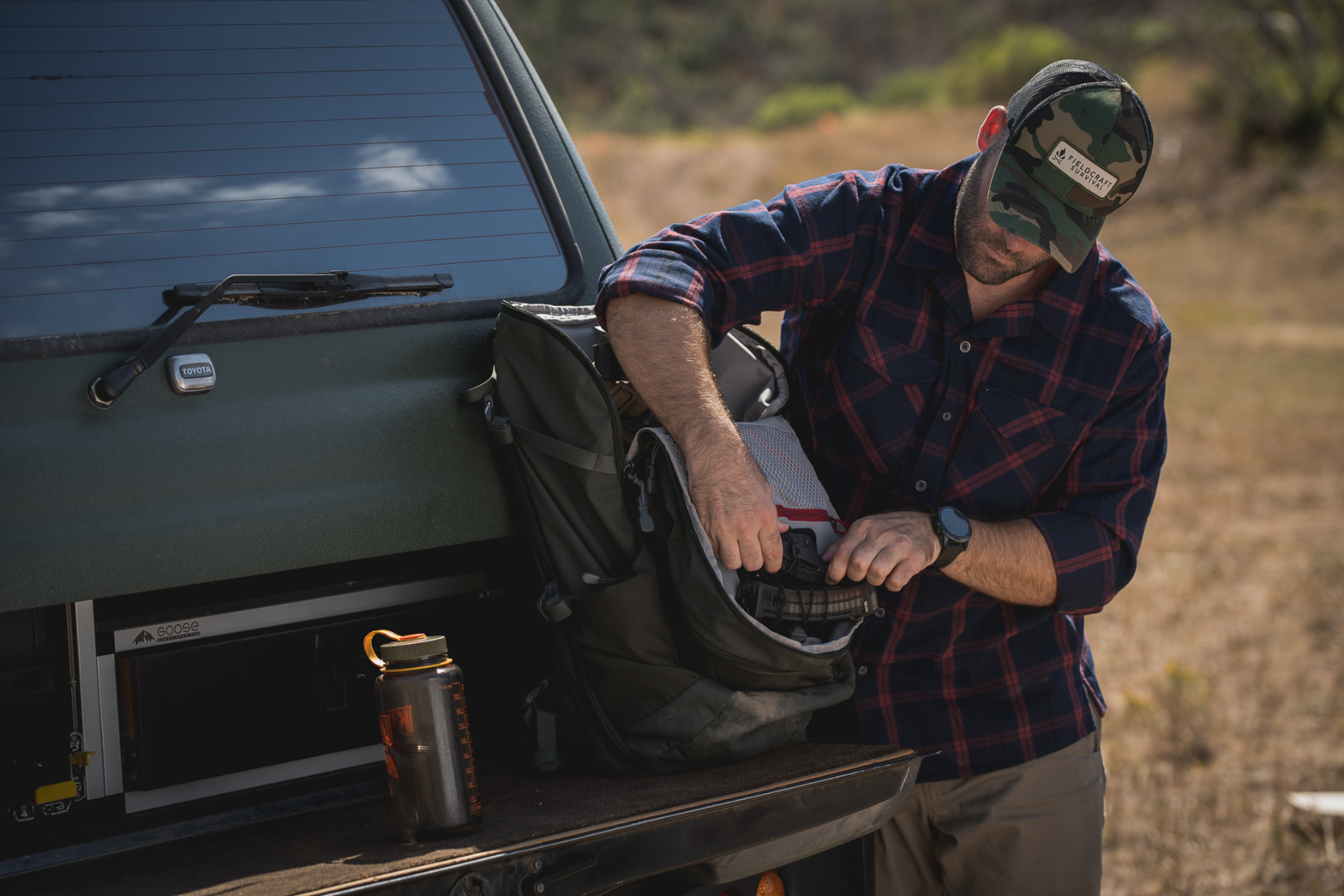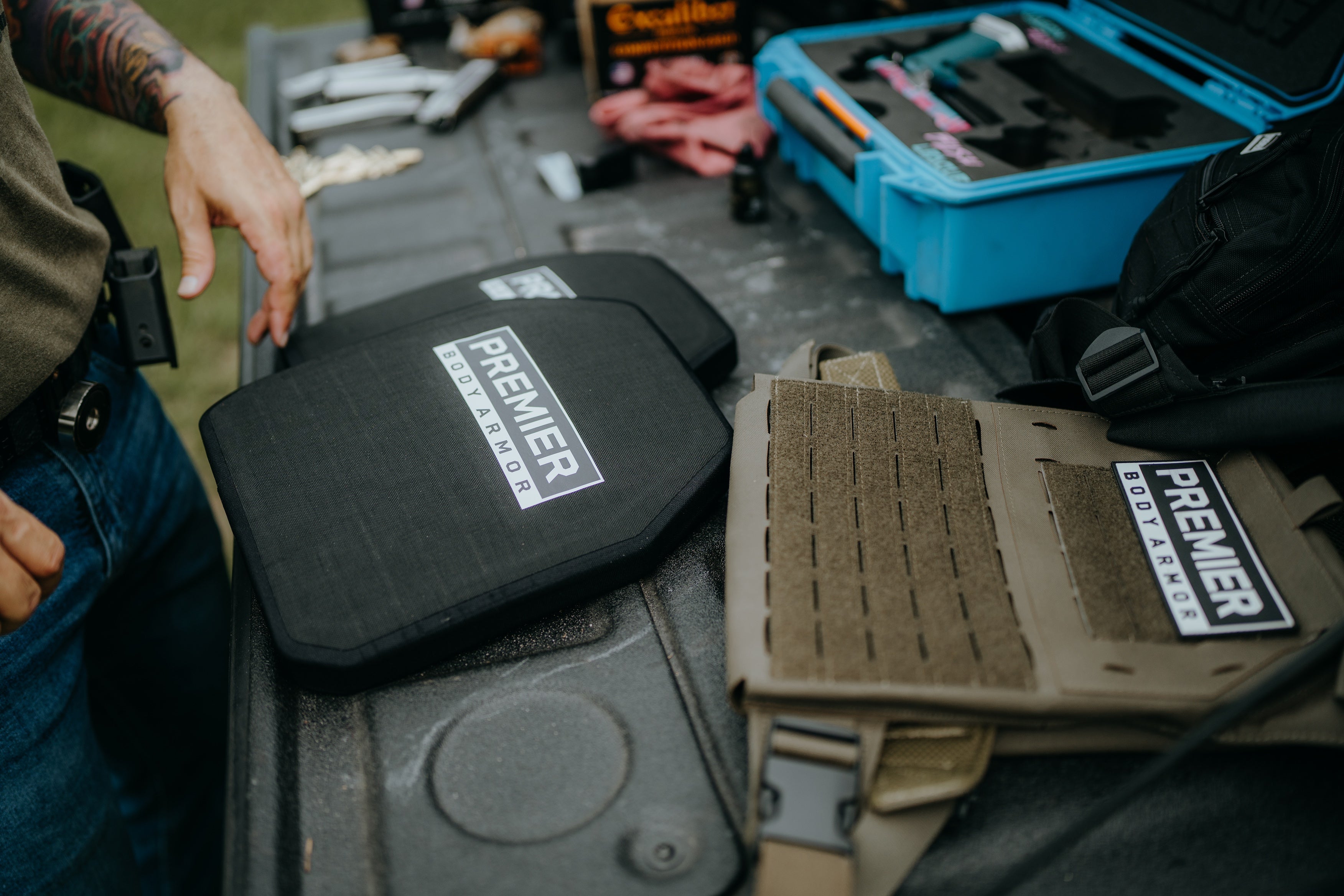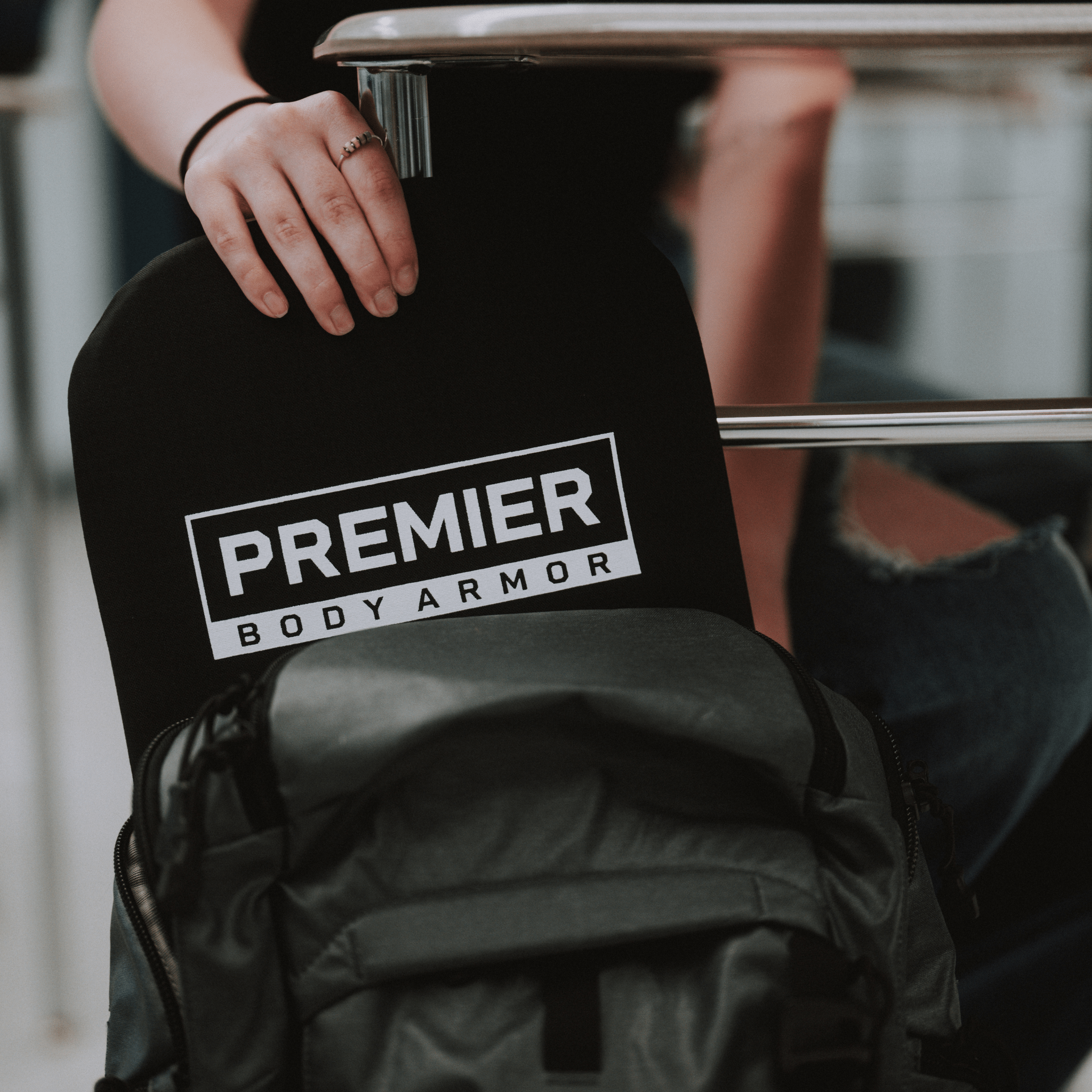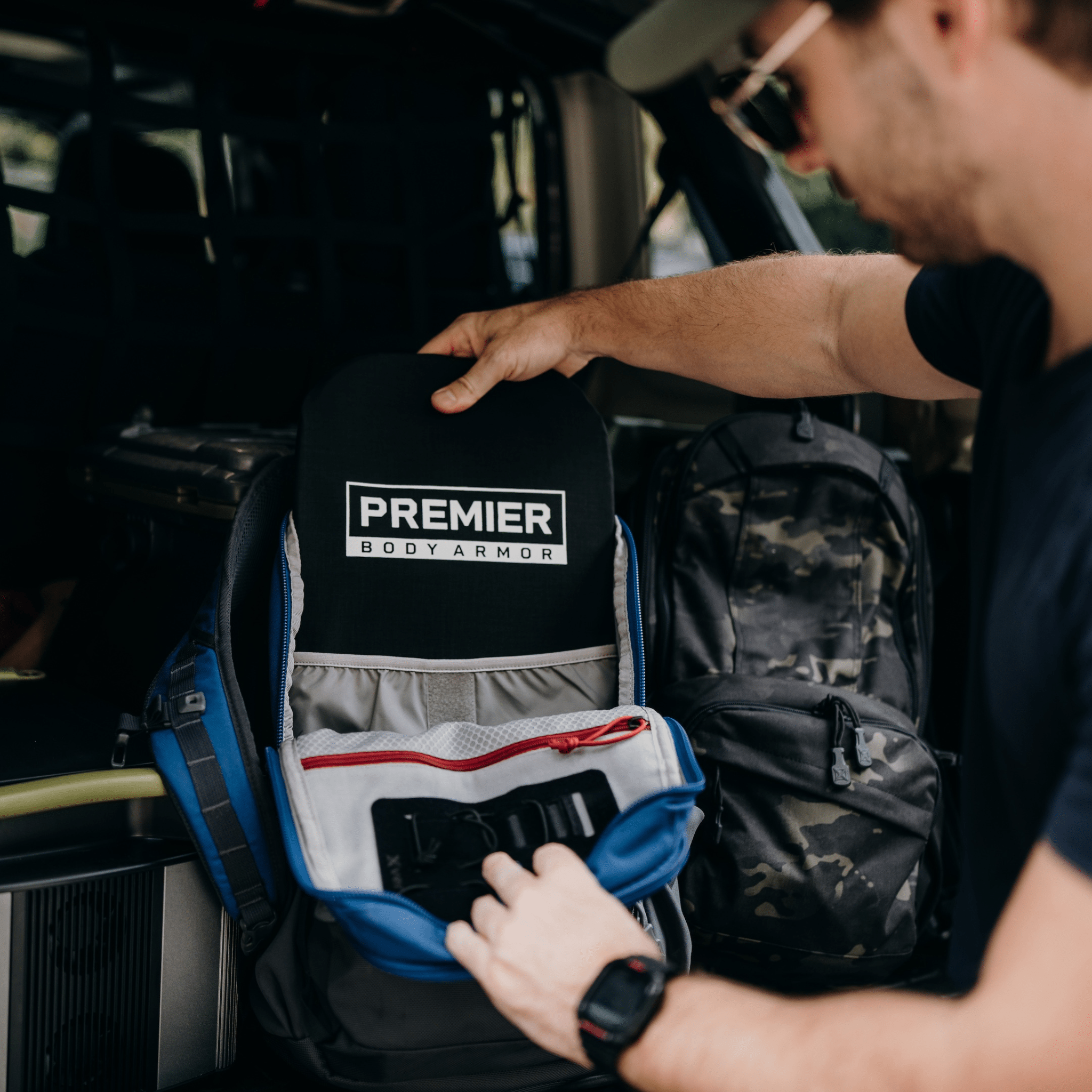Building a Bug Out Bag: How to Pack the Essentials
What is a Bug Out Bag?
A bug out bag (also known as a B.O.B.) is a portable readiness kit for preppers who want to ensure they are prepared for emergency situations. While the use case of a bug out bag varies for everyone and their needs, the basic survival kit includes essential items such as food, water, first aid supplies, tools, and other survival necessities.

Not to be confused with an EDC backpack, bug out bags include essentials that provide a means to “bug out,” hence the name, in case of an emergency. Preppers assemble these bags as part of a broader strategy for ensuring self-sufficiency in case of an emergency situation.
Why Do You Need a Bug Out Bag?
If this is your first time hearing about an emergency bag, you might be asking “Why do I need a bug out bag?” The answer varies for everyone, but it ultimately boils down to being prepared for unexpected disaster.
Those who are invested preppers assume that the worst-case scenario could happen, even if the chances are relatively low, and they plan accordingly. While building out a good kit may be a time consuming and costly process, the peace of mind that comes from being prepared for any emergency situation is invaluable.
How to Build a Bug Out Bag
Building a bug out bag takes careful planning, awareness of potential emergency scenarios, and routine maintenance to ensure your B.O.B. is always stocked and ready. Before purchasing equipment, it is crucial to evaluate your needs.
Identify potential risks and customize your gear to address specific challenges, whether it be the climate, terrain, or number of people the bag is intended to support, and use this information to build out a comprehensive list of all things you think might be necessary for your needs.
From here, choose a durable container, whether it be a weather-proof backpack for one to three people, or a larger plastic container for four to six people. Nonetheless, the container should be sturdy, organized, and easily accessible.
Essentials for Every Bug Out Bag
When creating an index of your desired bug out bag supplies, consider the use case for each item. Use cases include how relevant it is to your desired level of preparedness, whether it is for a short term trip or a longer journey. It is important to consider this because you don’t want to be underprepared or overprepared. Overpreparation can impact the mobility, accessibility, and organization of your pack, so be sure to plan accordingly.
Food Supplies
One of, if not the most essential items for a bug out bag is food. Food for bug out bags should be non-perishable, light, and nutrient dense to optimize for space. The best food for bug out bags includes things like MREs, dried fruit, energy bars, and lightweight canned goods. A long shelf life helps limit the amount of upkeep that needs to occur and can save money in the long run.
Water Purification
Be sure to include some method of water purification with your gear, whether it be a water filter, iodine tablets, or a way to easily boil water. Bug out bag water ensures you are safe against water-borne bacteria that could cause sickness, and provides a safe source of water if your emergency supply runs out. Having some type of water purification tablets or filter is also a good idea.
Protection
Another key component to a well-curated bug out bag is personal protection. Whether it be defensive protection like a bulletproof backpack insert, or offensive protection like a firearm, taser, or knife, keeping protection in your bag is essential for personal safety.
When choosing the type of bug out bag weapon you want, keep in mind the limitations of your pack. If the bag is smaller, a rifle may not be the best choice. Instead a pistol might serve your needs better. Always remember, a weapon should be properly cleaned and maintained to ensure efficacy in times of need.
Clothing
If you plan to take a trip overnight or into the woods, your bug out bag should include spare clothing such as socks and underwear, as well as seasonal clothing like warm pants, jackets, and sweaters. The best clothes for a bug out bag should suit the needs of your travels without being cumbersome or overbearing. At the end of the day, it is important that your bug out bag clothing is warm and dry in case you get cold or wet.
First Aid
A bug out bag first aid kit is essential for emergency preparedness. Keeping supplies like a bleed control kit, fever-reducers, and painkillers on hand can make a huge difference toward keeping you and your party healthy in the event of a disaster or medical emergency. It is also important to consider potential medical scenarios that may arise from anything like a cold to a severe injury.
Sleeping Gear
If you plan on taking your bug out bag off road or into an unfamiliar area, it is a good idea to keep some basic camping supplies on hand. Gear like a bug out bag sleeping bag, sleeping pad and compact tent will provide warmth and protection from the elements in case of an emergency. Be sure that these supplies are lightweight and compact, as space for your bug out bag sleeping gear could be limited depending on the circumstances.
The 10 Most Commonly Forgotten Bug Out Bag Items
When planning out your bug out bag, it is likely that you will forget about a few things that could be helpful. This is why we have compiled the top 10 forgotten bug out bag items below:
- Shoes and Socks
- Cash
- Rain Gear
- USB Power Bank
- Hats
- Walkie Talkies
- Fire Starter
- Zip Ties
- Medications
- Superglue
- Silcock key
- Nail clipper
While a lot of these things aren’t essentials (like superglue, nail clippers, and zip ties), they are all useful and could provide a lot of relief in a survival situation. Keeping these items in mind while planning your bug out bag will go a long way to ensure a decent quality of life in an emergency situation. After all, a firestarter or walkie talkie could be the difference between life and death.
Tips for Building the Ideal Bug Out Bag
Building out the ideal bug out bag involves strategic planning and consideration. Bugging out could be necessary due to weather, mechanical failure, or a larger scale (and thankfully less likely) disaster like societal collapse.
Some tricks to preparing a B.O.B. include due diligence, effective organization, and a keen approach to upkeep and maintenance. This means researching the environment you are preparing the bag for, whether it be an urban kit more focused on a remote location.
Be sure to determine how many people the B.O.B. should support, whether it is a single person or a whole family.
Choose a good container, and consider potential scenarios, prioritize compactness and keeping things dry, and make a habit of routinely checking expiration dates on food and medicine, as well as assessing the integrity of supplies like your tent and clothing.
It is critical to stay vigilant and inventory your gear regularly. If all of these bug out bag tips are taken into consideration, you should be more than prepared in the event of an emergency.
Written by Aidan Shelton










Leave a comment